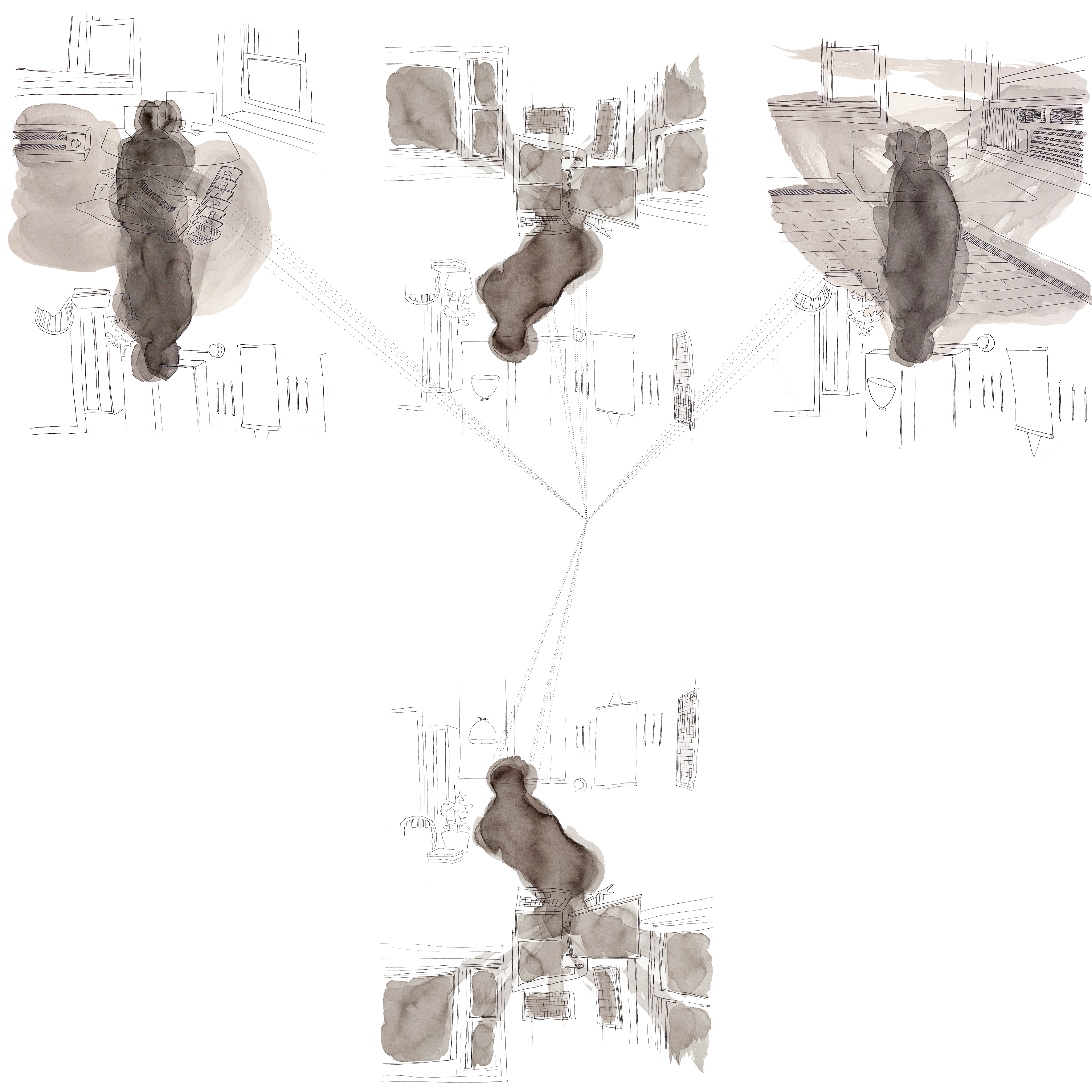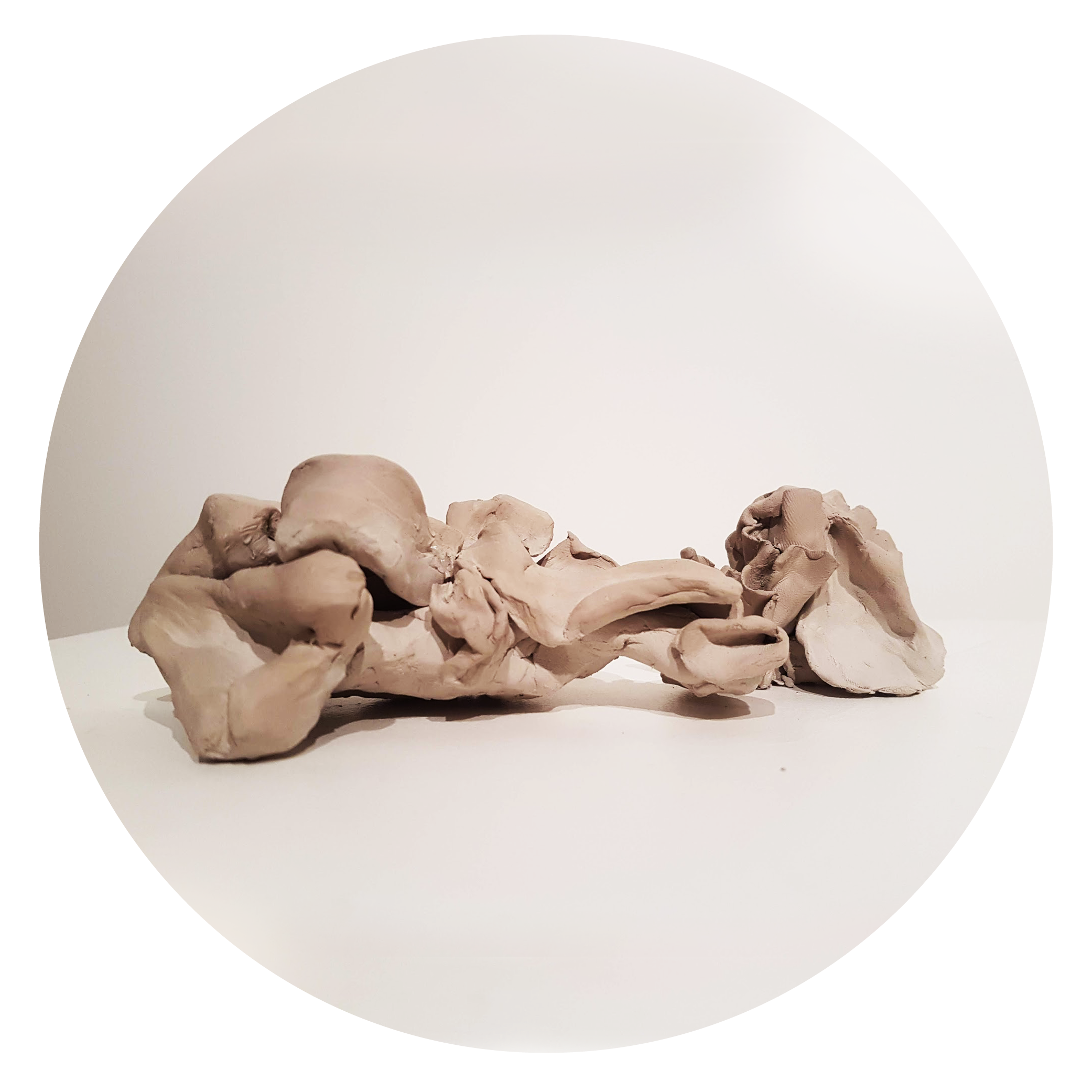
Personal Room
Analog Studio
Prof. Mark Raymond
, Soumya Dasgupta
Feb, 2021
Analog Studio
Prof. Mark Raymond
, Soumya Dasgupta
Feb, 2021
As part of the Analog Studio series of work, students created a series of drawings to enhance our awareness of spatiality, architectural sensibility, and personal history. The six drawings included a one word title prompt, sequentially portrait, assembly, personal room, common room, urban, and landscape.
With the introduction of the assignment, I initially debated between several rooms to work with – the Japanese tearoom at my grandmother’s house, an imagined future room of my own, and the room I am occupying currently in Champaign, IL. The topic of my previous assignment – tea – initially drew me to depict the tearoom, but as I realised I could not experience the room at the moment and I lacked photos of it, I left the tearoom for an exercise in the future. This was similarly the case for an imagined room, as the spatial qualities would be difficult to grasp in this exercise. I thus chose to study my one-bedroom apartment in Champaign, which I have spent most of the pandemic in.
Following my previous assignments, in this exercise, I am continuously interested in capturing the temporal element. In the context of a room, the temporal was initially the location of the body – where I sit and where I stand. Later another topic emerged, which was to depict shifting eye movements, where I would emphasise architectural elements as well as objects in my house that lead my eye to linger. These “portals” were divided into 3 main categories – the digital portal (screens), the exterior portal (windows), and the transcending portal (artwork).
The two topics – the movement of the body and eye – proved to work well in my group, where we had an overarching theme of shifting movement, impressions, and ambiguity. KB analysed the use of his apartment and how programs bled into one another, contrary to what real-estate agents sold to him, while Lesego studied the varying impressions of a room from memory remembered by different people.
Interestingly, my first instinct to analyse a room was to jump straight to the plan. As an architectural student, conventional drawings such as the plan, section, and axonometric have become an instinctive way to understand space. This was also common among my group, where Lesego started with both the plan and section, while KB produced axonometrics. Initially, my approach to annotating my eye movement was extremely diagrammatic, where I laid red lines over a plan. However, as our project progressed with feedback, I became more interested in capturing the experiential element. I started depicting slightly distorted perspectival views of my room from my desk.
To make my analysis more personal, I looked back into my previous exercises and decided to revisit the use of the calligraphy brush and ink as a medium. While the use of a wet, stain-like brush stroke is a constant among my first three exercises (the figure, the assembly, and the room), the brush stroke is applied differently. Here the brush stroke plays between the figural and the analytic, unlike my first two exercises, which leaned to the former. The brushstroke was successful in capturing the temporal and shifty quality of my eye movement, while its figural presence pulled one’s focus. This created an interesting ambiguity of the subject: While the subject is the room, the brush strokes figural quality seeks to replace the room as the subject, inverting the importance between the physical room and temporal sensory experiences.
The effectiveness of the first drawing, which documented eye movement, then prompted me to produce more drawings that analyse different sensory experiences in the room. Two other drawings, both focused on thermal and haptic experiences, emerged as a result – a drawing of heat and a drawing of the lack of heat. All three drawings use the brush stroke to bring focus to invisible and visceral forces while its dual composition indicates two experiences. Each drawing is composed of a view from my desk, while the backdrop of my workstation is presented as a reflection, with the common element of my figure linking the two views together.
The decision to include the backdrop of my workstation relates to our pandemic experience. With virtual meetings becoming the prominent method to communicate, we are more aware of our appearance and spatial qualities due to the heavy use of webcams. In my final composition, I present the three drawings twice, with the bottom row of the drawings inversed, presenting the view of me from a webcam as the primary perspective. This duality allows multiple points of view, showcasing the spatial experience of my room both from my perspective, as well as my conference attendees’.
With the introduction of the assignment, I initially debated between several rooms to work with – the Japanese tearoom at my grandmother’s house, an imagined future room of my own, and the room I am occupying currently in Champaign, IL. The topic of my previous assignment – tea – initially drew me to depict the tearoom, but as I realised I could not experience the room at the moment and I lacked photos of it, I left the tearoom for an exercise in the future. This was similarly the case for an imagined room, as the spatial qualities would be difficult to grasp in this exercise. I thus chose to study my one-bedroom apartment in Champaign, which I have spent most of the pandemic in.
Following my previous assignments, in this exercise, I am continuously interested in capturing the temporal element. In the context of a room, the temporal was initially the location of the body – where I sit and where I stand. Later another topic emerged, which was to depict shifting eye movements, where I would emphasise architectural elements as well as objects in my house that lead my eye to linger. These “portals” were divided into 3 main categories – the digital portal (screens), the exterior portal (windows), and the transcending portal (artwork).
The two topics – the movement of the body and eye – proved to work well in my group, where we had an overarching theme of shifting movement, impressions, and ambiguity. KB analysed the use of his apartment and how programs bled into one another, contrary to what real-estate agents sold to him, while Lesego studied the varying impressions of a room from memory remembered by different people.
Interestingly, my first instinct to analyse a room was to jump straight to the plan. As an architectural student, conventional drawings such as the plan, section, and axonometric have become an instinctive way to understand space. This was also common among my group, where Lesego started with both the plan and section, while KB produced axonometrics. Initially, my approach to annotating my eye movement was extremely diagrammatic, where I laid red lines over a plan. However, as our project progressed with feedback, I became more interested in capturing the experiential element. I started depicting slightly distorted perspectival views of my room from my desk.
To make my analysis more personal, I looked back into my previous exercises and decided to revisit the use of the calligraphy brush and ink as a medium. While the use of a wet, stain-like brush stroke is a constant among my first three exercises (the figure, the assembly, and the room), the brush stroke is applied differently. Here the brush stroke plays between the figural and the analytic, unlike my first two exercises, which leaned to the former. The brushstroke was successful in capturing the temporal and shifty quality of my eye movement, while its figural presence pulled one’s focus. This created an interesting ambiguity of the subject: While the subject is the room, the brush strokes figural quality seeks to replace the room as the subject, inverting the importance between the physical room and temporal sensory experiences.
The effectiveness of the first drawing, which documented eye movement, then prompted me to produce more drawings that analyse different sensory experiences in the room. Two other drawings, both focused on thermal and haptic experiences, emerged as a result – a drawing of heat and a drawing of the lack of heat. All three drawings use the brush stroke to bring focus to invisible and visceral forces while its dual composition indicates two experiences. Each drawing is composed of a view from my desk, while the backdrop of my workstation is presented as a reflection, with the common element of my figure linking the two views together.
The decision to include the backdrop of my workstation relates to our pandemic experience. With virtual meetings becoming the prominent method to communicate, we are more aware of our appearance and spatial qualities due to the heavy use of webcams. In my final composition, I present the three drawings twice, with the bottom row of the drawings inversed, presenting the view of me from a webcam as the primary perspective. This duality allows multiple points of view, showcasing the spatial experience of my room both from my perspective, as well as my conference attendees’.
